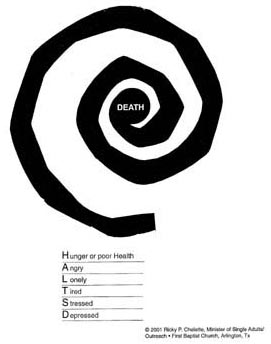Please elaborate on this statement from your article on The Da Vinci Code: “…the Canon gradually took shape as the church recognized and embraced those books that were inspired by God.”
How did the church “recognize” which books were inspired by God? Did the church, therefore, consider other texts not to be “inspired by God”? Can you suggest any material that refers to the above?
Thank you for your thoughtful question and for visiting our web site.
Below is a document that I composed from information found in F. F. Bruce’s book The Canon. I highly recommend his work if you are interested in digging deeper into the subject of canonicity.
Other works were used by the early church (Didache and Shepherd of Hermas) but were not equated to scripture. Later writings were weighed against the Apostles’ teachings and rejected or read accordingly.
Sincerely,
Don Closson
The Canon
From The Canon of Scripture by F. F. Bruce
“That the New Testament consists of the twenty-seven books which have been recognized as belonging to it since the fourth century is not a value judgment; it is a statement of fact. Individuals or communities may consider that it is too restricted or too comprehensive; but their opinion does not affect the identity of the canon. The canon is not going to be diminished or increased because of what they think or say: it is a literary, historical and theological datum.”{1}
Bruce defines the criteria for canonicity in chapter 21 of his book; he includes the following items:
Apostolic Authority – All of the NT writings contained a degree of apostolic authority. This could be established by direct apostolic appointment (those chosen directly by Jesus), writing on behalf of one with apostolic authority (Mark writing on behalf of Peter), or being a member of Jesus’ family (James & Jude). The Acts of Paul, which was written in the middle of the second century, was orthodox but the author had no apostolic authority and it was a work of fiction. Bruce also points out that any book known to be pseudonymous [written by a person other than the attributed author] would not have been included in the canon.
Antiquity – The writing must belong to the apostolic age. Anything written later, although useful and theologically accurate (Shepherd of Hermas) would not be considered canonical. “Writings of a later date, whatever their merit, could not be included among the apostolic or canonical books.”{2}
Orthodoxy – Any writing considered to be part of the canon must be theologically consistent with the apostolic faith. This faith rested upon the undisputed apostolic writings and the teachings established in those churches founded by the apostles. The Bishop of Antioch (199 AD) named Serapion had The Gospel of Peter removed from books that were read in the church of Rhossus when he discovered that it included a docetic (heretical) view of Christ. Docetism and Gnosticism were two views of Christ that competed with the orthodox apostolic teachings in the early church.
Catholicity – Only those works that were received by the greater part of the catholic or universal church could be acknowledged as canon. This might be combined with the notion of traditional use. Bruce writes, “If any church leader came along in the third or fourth century with a previously unknown book, recommending it as genuinely apostolic, he would have found great difficulty in gaining acceptance for it: his fellow Christians would simply have said, ‘But no one has ever heard of it!'”{3}
Inspiration – Canonicity and inspiration have been closely connected in the minds of Christians since the early days of the church. Even when apostolic authority was questioned (as with Mark and Luke) works were accepted because they were considered authoritative (inspired, God breathed) and trustworthy witnesses to the saving events of Christ’s ministry.
Notes
1. F. F. Bruce, The Canon of Scripture, (Downers Grove, IL: InterVarsity Press, 1988), p. 250.
Edited by Don Closson, Probe Ministries, 2004
See related posts for more relevant articles and answers to questions.






